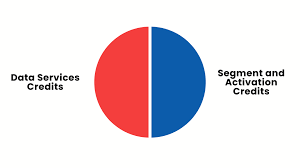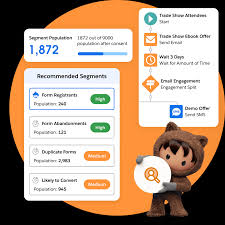Credits are the currency of usage in Salesforce Data Cloud, where every action performed consumes credits. The consumption rate varies based on the complexity and compute cost of the action, reflecting different platform features.
Data Cloud Pricing Model
The pricing model for Data Cloud consists of three primary components:
- Data Storage: Measured in terabytes, this component covers records stored in the data model.
- Data Services: Utilizes a credit-based model that accounts for actions such as connecting, ingesting, transforming, and harmonizing data. Consumption is categorized into connect, harmonize, and activate actions, each with varying rates depending on the service utilized.
- Add-Ons: Optional features like Data Spaces, Advertising Audiences, Activations, and Segmentation, which vary by platform edition.
Data Service Credits
Each platform action incurs a specific compute cost. For instance, processes like connecting, ingesting, transforming, and harmonizing data all consume ‘data service credits’. These credits are further divided into categories such as connect, harmonize, and activate, each encompassing multiple services with differing consumption rates.
Segment and Activation Credits
Apart from data service credits, ‘segment and activation credits’ are consumed based on the number of rows processed when publishing and activating segments.
Monitoring Consumption
Currently, Data Cloud users must request a consumption report from their Salesforce Account Executive to review credit and storage usage. However, the new Digital Wallet feature in the Summer ’24 Release will provide users with real-time monitoring capabilities. This includes tracking credit and storage consumption trends by usage type directly within the platform.
Considerations and Best Practices
To optimize credit consumption and ensure efficient use of resources, consider the following best practices:
- Ingestion: Import only necessary data for segmentation, identity resolution, and analytics. For batch ingestion, opt for incremental refreshes over full refreshes where feasible.
- Data Transformation: Use available ETL tools to preprocess data before ingestion to reduce compute costs during batch data pipeline usage.
- Segmentation: Design segments to minimize processed records and specify optimal lookback periods to refine engagement data processing.
- Activation: Choose incremental refreshes over full refreshes when activating segments to update only changed records.
- Identity Resolution: Validate match rates with sample data sets before ingesting entire profile data. Manage unified profiles efficiently to avoid unnecessary refreshes.
- Bring Your Own Lake (BYOL): When using external data platforms like Snowflake or Google Big Query, share only required data objects to minimize credit consumption. Consider enabling data federation with acceleration for persistent data storage in Data Cloud.
Final Thoughts
Credits are integral to Data Cloud’s pricing structure, reflecting usage across various platform activities. Proactive monitoring through the Digital Wallet feature enables users to manage credits effectively, ensuring optimal resource allocation and cost efficiency.
Content updated June 2024.












